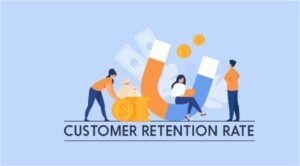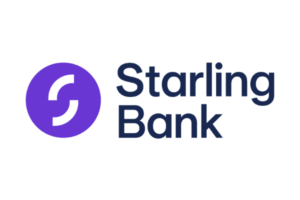According to Ombud’s 2013 report, Open Research: Signature Solutions, the “adoption of eSignature solutions has empowered visionary enterprises to lead their industries by streamlining entire business workflows into end-to-end digital processes.” Member service is the pillar of the Credit Union Industry. Credit Unions strive to make their services more efficient to their customers. At the… Continue reading eSignature – a comprehensive digital transaction for Credit Union members
Month: November 2021
Customer churn has a devastating effect on businesses. On the flip side, it is estimated that a 5% increase in customer retention can lead to a 25-95% increase in profits.
When a customer churns, it not only means a lost deal in the short term—it also means another competitor gains a long-term asset and can expend that asset improving their products. Every business loses customers. But it’s the quality and rate of your attrition that can kill your business growth. The higher the churn rate, the more money you lose every month.
The consumer lending business has one of the worst customer retention rates of any business. Borrowers are more likely to consider refinancing options whenever existing mortgage deals revert to a standard rate. So, lenders must be vigilant at the threat of losing their current borrowers.
Why is customer retention crucial to business?
Customer retention means that a single customer will continue to buy from you over several years – which is described as the Lifetime Value (LTV) of your customer. Customer retention measures not only how successful a company is at acquiring new customers, but also how successful they are at satisfying existing customers.
Customer churn is a crucial matrix for businesses that want to survive.”
There are a few reasons why customer churn is crucial to business:
1. Affordability: It’s 5-25X more expensive to acquire a new customer than to retain an existing customer.
2. ROI: A 5% increase in customer retention can increase company revenue by 25-95%.
3. Loyalty: Retained customers buy more often than newer customers.
Customer retention will not improve overnight. To increase retention, understand why you are losing the existing customer, and what stops them from returning. However, if you have a few solid strategies up your sleeve, you can coax repeated customers more.
Customer retention strategies
1. Get feedback from customers
2. Create personalized customer loyalty schemes
3. Predict customer churn rate from historical data
4. Improve customer experiences across channels
How Insight Consultants can help
The good news is that by leveraging the power of AI and Automation, Insight Consultants can help your businesses to retain a customer for life.
1. Create customer loyalty schemes through AI-powered segmentation
2. Add Intelligent automation to existing IT systems for a personalized customer journey
3. Identify and score churn indicators through Predictive Modelling
4. Share customer performance through reports and dashboards
We believe that with us, you can make great and useful changes to your customer retention. Take a small step and Talk to us and begin your retention journey now!
The lending industry is data-intensive with massive graveyards of unused and unappreciated credit processing data. As lending firms and credit bureaus face increasing pressure to stay profitable, understanding customer needs and preferences becomes a critical success factor.
But businesses still struggle to make data-driven business decisions, relying instead on all classic strategies — experience, status quo, and “gut feeling” about the right way to do things.
So how Lenders can effectively gain insights from data to make better, data-driven decisions.
The solutions is Data Analytics.”
Data and analytics help firms maximize performance, reduce cost, and improve performance & overall profitability. Using analytics, you can reach out to the right customers and improve customer acquisition. It also assists in efficient delinquency management and comprehensive loan servicing. By increasing the loan life-cycle value, the lenders can retain their most profitable customers.
Being the best in an industry is no longer enough; companies must aspire to be at least at par across industries to compete effectively. So, firms should take the right tactic.
The approach to implementing analytics:
1. Align business goals with analytical outcomes
2. Identify the right analytical partner/tool
3. Identify the best data visualization tools
How can the data and analytics help Lenders?
The consumer lending business is based on the notion of managing the risk of borrower default. Credit scoring systems and predictive models identify the chances of uncertainty and guide in detecting risk. It gives the lenders a clear picture of defaulters. It can help lenders to make faster and more accurate credit decisions.
Key benefits:
1. Reach the right customers with the right products
2. Deliver a superior customer experience through faster on-boarding
3. Identify, target, and retain the most profitable customers
4. Drive-up recovery rates while driving down collection costs
Insight Consultants offer
1. Customized credit models to reduce lending risk
2. Delinquency prediction models to lower loan delinquency rates
3. Workflow automation via ML models which can substantially reduce costs and time associated with internal loan processing and turnaround.
4. Data-driven Customer Segmentation to maximize the value of each customer
5. Improved collection models which segregate risky customers
With several years of experience in the lending domain
Insight Consultants offer a powerful and user-friendly Lending solution that enables informed decision-making through accurate predictions and easy-to-build decision models. If you are looking for ways to harness the power of data analytics.
Monthly Newsletter | Nov 2021 | Issue 115
Featuring
- Reengineer the power of data and analytics to make strategic decisions
- Make retention a top priority: Tips to control customer churn
- In the News
- Major Events
- Key Stats
Focus On
From Data to Insights: Reengineer the power of data and analytics to make strategic decisions
The lending industry is data-intensive with massive graveyards of unused and unappreciated credit processing data. As lending firms and credit bureaus face increasing pressure to stay profitable, understanding customer needs and preferences becomes a critical success factor.
But businesses still struggle to make data-driven business decisions, relying instead on all classic strategies — experience, status quo, and “gut feeling” about the right way to do things. So how can lenders effectively gain insights from data and analytics to make better, data-driven decisions?
The solution is Data and Analytics.
Data and analytics help firms maximize performance, reduce cost, and improve performance & overall profitability. Using analytics, you can reach out to the right customers and improve customer acquisition. It also assists in efficient delinquency management and comprehensive loan servicing. By increasing the loan life-cycle value, lenders can retain their most profitable customers.
Being the best in an industry is no longer enough; companies must aspire to be at least at par across industries to compete effectively. So, firms should take the right tactic.
The approach to implementing data and analytics
1. Align business goals with analytical outcomes
2. Identify the right analytical partner/tool
3. Identify the best data visualization tools
How can data and analytics help Lenders?
The consumer lending business is based on the notion of managing the risk of borrower default. Credit scoring systems and predictive models identify the chances of uncertainty and guide in detecting risk. It gives the lenders a clear picture of defaulters. It can help lenders to make faster and more accurate credit decisions.
Key benefits:
1. Reach the right customers with the right products
2. Deliver a superior customer experience through faster on-boarding
3. Identify, target, and retain the most profitable customers
4. Drive-up recovery rates while driving down collection costs
Insight Consultants offer
1. Customized credit models to reduce lending risk
2. Delinquency prediction models to lower loan delinquency rates
3. Workflow automation via ML models which can substantially reduce costs and time associated with internal loan processing and turnaround.
4. Data-driven Customer Segmentation to maximize the value of each customer
5. Improved collection models which segregate risky customers
With several years of experience in the lending domain, Insight Consultants offers a powerful and user-friendly solution that enables informed decision-making through accurate predictions and easy-to-build decision models. If you are looking for ways to harness the power of data analytics, Contact Us
Keep Reading
Make retention a top priority : Tips to reduce customer churn
Customer churn has a devastating effect on businesses. On the flip side, it is estimated that a 5% increase in customer retention can lead to a 25-95% increase in profits.
When a customer churns, it not only means a lost deal in the short term—it also means another competitor gains a long-term asset and can expend that asset improving their products. Every business loses customers. But it’s the quality and rate of your attrition that can kill your business growth. The higher the churn rate, the more money you lose every month.
The consumer lending business has one of the worst customer retention rates of any business. Borrowers are more likely to consider refinancing options whenever existing mortgage deals revert to a standard rate. So, lenders must be vigilant at the threat of losing their current borrowers.
Why is customer retention crucial to business?
Customer retention means that a single customer will continue to buy from you over several years – which is described as the Lifetime Value (LTV) of your customer. Customer retention measures not only how successful a company is at acquiring new customers, but also how successful they are at satisfying existing customers.
Customer churn is a crucial matrix for businesses that want to survive.
There are a few reasons why customer churn is crucial to business:
1. Affordability: It’s 5-25X more expensive to acquire a new customer than to retain an existing customer.
2. ROI: A 5% increase in customer retention can increase company revenue by 25-95%.
3. Loyalty: Retained customers buy more often than newer customers.
Customer retention will not improve overnight. To increase retention, understand why you are losing the existing customer, and what stops them from returning. However, if you have a few solid strategies up your sleeve, you can coax repeated customers more.
Customer retention strategies
1. Get feedback from customers
2. Create personalized customer loyalty schemes
3. Predict customer churn rate from historical data
4. Improve customer experiences across channels
How Insight Consultants can help
The good news is that by leveraging the power of AI and Automation, we can help your businesses to retain a customer for life.
1.Create customer loyalty schemes through AI-powered segmentation
2.Add Intelligent automation to existing IT systems for a personalized customer journey
3.Identify and score churn indicators through Predictive Modelling
4.Share customer performance through reports and dashboards
We believe that with us, you can make great and useful changes to your customer retention. Take a small step and Talk to us and begin your retention journey now!
Get insights to stay ahead in lending industry
Insights delivered monthly !
In the News
Banks ease credit rules and demand grows as US economy motors ahead
Banks largely eased credit standards for businesses, commercial real estate investors and households in the third quarter of the year, as the US. economy weathered the latest wave of the coronavirus pandemic, a Federal Reserve survey reported.
The Fed’s Senior Loan Officer Survey, offering evidence of continued momentum for the economy, said banks “generally reported having eased standards” for business loans by lowering rates, expanding credit lines or imposing less restrictive terms.
The banks “cited a more favorable or less uncertain economic outlook” as well as more competition among lenders and “an increased tolerance for risk” amid general improvement in markets and the economic outlook, the Fed reported. Demand for loans was also up, particularly among middle-sized and larger firms.
Looser standards and higher demand also were reported for commercial real estate lending.
Banks in general also eased standards for consumer credit card and auto loans, by lowering credit score requirements or increasing credit limits.
But while demand for credit cards increased, demand for auto loans declined, the Fed reported, a possible sign that price increases had begun to hit demand for autos, or that the surge of buying over the last year had peaked.
In special survey questions related to the pandemic, banks said demand for business and credit card loans remained below pre-pandemic levels, with stronger demand expected over the next six months.
Banks “cited customers facing more favorable income prospects, and higher expected consumer spending needs given prevailing interest rates and terms, as reasons for stronger expected demand,” the Fed reported.
Amazon announces partnership with Lendistry for SMB Lending
A longtime SMB lender toward its own seller network, Amazon will begin offering official short-term loans up to $100,000. Lendistry is a minority-led SMB and commercial lending fintech and an established Community Development Financial Institution (CDFI) and is part of the SBA Community Advantage lending program. Like many SMB Lenders, the firm helped give out PPP loans, and most of its business comes from providing SBA loans.
According to the Amazon press release, the majority of Lendistry’s funding efforts have gone to “low-to-moderate income and other historically disadvantaged business owners and the communities they serve, including African American and Hispanic-Latino populations, and individuals from CDFI-designated investment areas.” “Amazon came to us with this incredible idea,” CEO and Founder Everett K. Sands said.
Amazon’s massive seller marketplace is an excellent fit for Lendistry. The firm was founded in 2015, and according to deBanked, as late as 2018 had a staff that numbered in twenties.
Justin Leto, Co-Founder, and CEO of Idea financial SMB financing said this is just another sign of the progress of the SMB lending industry and the roaring US market this past year.
According to market pulse, there were 461,000 U.S.-based sellers on the Amazon platform in 2020. In 2019, Amazon reported funding over $1 billion to sellers on the platform, becoming one of the largest SMB financiers in the world.
According to Amazon, the firm began offering loans to sellers in 2011, based “on the knowledge that an infusion of capital at the right moment could put small business sellers on the path to success.
“With Amazon Lending, it’s an invitation-only program: Amazon selects the sellers (based on online sales history) that it thinks are going to be the best fit for an Amazon Lending loan. That means that even if you really want a loan and have good sales history, you can’t just go out and apply for Amazon Lending unless Amazon has invited you.”
Fireblocks riding major fundraise to boost digital banking support effort
Powered by their $300-million fundraise over the summer, Fireblocks, a secure digital asset infrastructure company, is looking to drive infrastructure efforts of digital banking and crypto companies as the industry is poised for explosive growth.
With two decades of experience with telcos and cybersecurity, company co-founder and CEO Michael Shaulov had the perfect resume to serve as a springboard to this effort
Fireblocks provides 600 cryptocurrency and digital asset businesses with software and APIs to custody, manage treasury operations, access decentralized finance, mint and burn tokens and run digital asset operations.
The company raised more than $300 million at a $2.2 billion valuation back in July.
Fireblocks serves as the backstop, and their infrastructure allows them to deploy some of the most sophisticated governance and policy engines that exist in the industry.
Starling Bank matures from digital upstart to mainstream lender
Two years ago, Starling was best known as digital banking upstart, targeting dissatisfied retail customers of the UK’s big bank with easy-to-use current accounts, overdrafts and money transfers. Yet in the UK’s huge business lending market it barely registered, with a paltry £115,000 of loans on its books. Then the Covid-19 pandemic hit and, amid the chaos of the sudden shift to remote working and fears of a deep recession, Starling, threw open its doors to small and medium-sized enterprises (SMEs). By March this year, Starling had facilitated £2.2bn of business loans to more than 40,000 customers.
The technological groundwork had been laid before Covid-19. In 2019, Starling was awarded a £100m grant by the UK’s Capability and Innovation Fund to build a new system that would allow it to lend to businesses. The money was part of a scheme to improve competition in the UK’s business banking market, which is dominated by incumbents such as NatWest, Barclays and Lloyds. Starling put another £100m into developing the new technology, and its system was almost ready in early 2020 as the pandemic took hold. “We had the fundamental building blocks in place, but we didn’t have the product,” says Anne Boden, Starling chief executive.
The big opportunity for Starling came when the UK government launched its coronavirus business support schemes, such as Bounce Back loans, and looked for banks to help distribute them. Starling had some quick thinking to do. “We had three or four days’ notice to get to know the scheme rules and launch the product,” says Boden. “It was a very difficult decision for us whether to do this or not. We would have to process an incredible amount of volume, we’d have to get our systems ready in time and be ready to face the press, because there was a lot of visibility out there about these loans. But if we didn’t do these loans, people would always say that Starling wasn’t there for me when I needed you.” Although this was not the cautious, step-by-step entry into business lending that Boden and her team had envisaged, they took the plunge. “I remember being there the day we pressed the button to open the website to allow people to apply. We didn’t know whether it would be a trickle or whether people were desperately wanting those loans,” she says.
However, Starling’s plans stretch beyond lending to SMEs based in the UK. Earlier this year, it made its first acquisition, buying specialist buy-to-let lender Fleet Mortgages for £50m, in a deal that brought with it £1.75bn of mortgages under management. It has also outlined plans to expand into Europe with what it calls banking as a service — allowing companies to use Starling’s technology to create their own savings accounts, current accounts and debit cards.
Events
Fintech Forum 2021
18 Nov 2021, Airport Club, Frankfurt, Digital
Key Stats
Central Bank Interest Rates and Current Libor Rates
| GBP Libor (overnight) | Interest (11-09-2021) | Central Banks | Interest Rates |
| Euro Libor | -0.58271% | American Interest rate (FED) | 0.25% |
| USD Libor | 0.07088% | Australian Interest rate (RBA) | 0.10% |
| CHF Libor | -0.79200% | British Interest Rate (BoE) | 0.10% |
| JPY Libor | -0.07367% | Canadian Interest Rate (BOC) | 0.25% |
| GBP Libor | 0.04025 % | Japanese Interest Rate (BoJ) | -0.10% |
DIGITAL TRANSFORMATION: Reshaping the future of finance and accounting

Digital transformation represents a key competitive opportunity, highlighting the fact that going digital is a top priority for everyone in every industry. All firms in all industries will eventually need to be finance and accounting empowered with the newest digital technology capability. BUT… Research shows that most firms spend less time on digital empowerment. Obsolete and traditional financial practices are still used. Key… Continue reading DIGITAL TRANSFORMATION: Reshaping the future of finance and accounting
Inefficient data management slowing down your Credit Union’s growth?

Most businesses agree that real-time data can help them make intelligent business decisions. When it comes to Credit Unions databases represent its most valuable assets. But several Credit Unions struggle to generate actionable insights, because of the overwhelming volume of data they must process daily. Without a holistic data management practice, credit union clients… Continue reading Inefficient data management slowing down your Credit Union’s growth?







